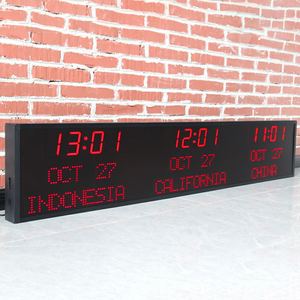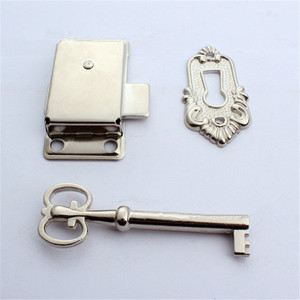(874 products available)



















































































































































































The style, mechanism, and materials used in making grandfather clocks define their types. All these elements contribute to how a specific clock looks or works. The following are some of the common types of grandfather clocks:
The above list includes some of the most popular types of grandfather clocks based on their functionalities. The names mentioned can be used to categorize the clocks based on their designs and appearances, too. For instance, a mechanical long case clock can also be referred to as a 'mechanical clock' because it works with the help of a mechanical system.
Style
There are different styles of grandfather clocks. Each style has a unique appearance. A case clock is a grandfather clock. It is made in the style of the original clockmakers. These makers were in Europe. Their clocks have long pendulums and weights inside a decorative case. The decorative case has three main sections. The top has a face with a dial and clock hands. The middle has a body that shows the time. The bottom has feet or a base. The weights and pendulum are inside the body. They hang down. The face and body section styles vary. They have different shapes. Some are round or square. They can be tall and thin or short and wide. The weights and long pendulum make the clock tick. The decorative case protects the inner workings. It also shows the time to people far away.
Materials
Materials used to make grandfather clocks vary. They ensure durability and aesthetic appeal. Wood is the most common material for grandfather clocks. It is used for the case and internal components. Popular wood choices include oak, cherry, walnut, and mahogany. These woods are chosen for their strength and beauty. They allow the clock to last for many years. Some grandfather clocks have metal cases. They are made of brass, steel, or other metals. These metal clocks are often more modern in style. They still show time very well. The dials and clock faces may have materials like enamel, glass, or metal. These materials make them easy to read and look nice. The clock movements use gears, weights, and a pendulum. These parts are made of metal for strength and accuracy. They may also include other materials, like plastic or composites, to improve performance and lower costs.
Mechanism
The mechanism of a grandfather clock is a clock movement. It drives the timekeeping. This antique clock uses a gear system. The gears move weights and a pendulum. The weights move down due to gravity. They turn the gears. The gears move the hands on the clock face. The long pendulum swings back and forth. It keeps the clock's time steady. It regulates the ticking speed. The movement is powered by weights that descend over time. They are raised periodically using a winding key or handle. The winding sets the timekeeping mechanism in motion. The intricate gear system translates the weight's descent into the movement of the clock hands. The pendulum's swing controls the clock's accuracy. It maintains a consistent time interval. This old design shows time. It also shows the art of making clocks long ago.
Historical Significance and Heritage:
Many families pass down their grandfather clocks, making them part of the family's history. These clocks are often handed down to mark special events like birthdays or anniversaries. When a clock is passed down, it connects the old owner to the new one. It often involves a special event because the clock is not just a tool; it is a family treasure.
Collecting and Display:
Some people love old things and want their homes to look special. They collect grandfather clocks because these clocks are rare and tell a lot about history. Collectors find unique clocks and show them in their homes or museums. They like clocks that are rare, look different, or have an interesting past. Collectors care for their clocks and share them with others.
Integration into Interior Design:
Designers put grandfather clocks in homes so they match the style of each room. These clocks can make a room look fancy, modern, or country. Designers choose clocks that fit well with the other decorations in the house. They suggest where to put the clock so it fits nicely in the space and looks good.
Special Occasions and Celebrations:
Grandfather clocks are given as gifts for special times when people want to celebrate and remember. People give these clocks to celebrate weddings because they are seen as gifts that last a long time. Graduations are also a time when families give clocks to show pride in education. Starting a new job is another reason to give a clock, wishing someone success in their career. Each time a clock is given, it comes with joy and hope for the future of the receiver.
Art and Craft Exhibitions:
Art shows sometimes display grandfather clocks to show how well they are made. These exhibits want people to see the skill it takes to make these clocks. The fine work on the wood and the beautiful carvings are highlighted. The art shows show how clock makers are like artists because they make useful things very beautiful.
Choosing a suitable grandfather clock for home decoration needs careful consideration. It is not only a timekeeping device but also a piece of art that can become the focal point in the room. The following are some factors to be considered when selecting one:
Style and design
One should determine what kind of appearance is desired from the clock. Does it have a traditional look or modernized one? Does it prefer ornate carvings or sleek lines? Looking at the house's current decor, a grandfather clock should blend in with or stand out as an accent.
Size and proportion
The size of the place where the clock will be kept should be measured to ensure it fits without overcrowding the space. Grandfather clocks are tall, so they need sufficient vertical space. Also, consider the proportionality of other furniture items within the room.
Quality and craftsmanship
It is important to look for solid wood construction and detailed finishings when evaluating quality and workmanship. A good grandfather clock will have a smooth movement and an attractive exterior.
Tone and chimes
Different clocks produce different sounds; some might have mellow tones while others ring out more vigorously. One should listen to them chime if possible, so they can choose one whose sound is pleasing enough for them.
Mechanism and maintenance
Considering winding mechanisms is necessary since some require daily winding while others only weekly or monthly. Also, think about what kind of maintenance the clock might need. Some modern ones come with quartz movements that need less maintenance than traditional ones.
Q1: How can a grandfather clock be wound if it stops ticking?
A1: Winding the key provided is the solution. The clock will start to tick again once it is adequately wound.
Q2: Why does a grandfather clock tick but not move?
A2: It may be due to insufficient winding or a technical problem. Ensure it is correctly wound; if so, check for faults.
Q3: How long should a grandfather clock run after winding?
A3: It depends on the clock's type and the mechanism's quality. A weekly wind is typical for old ones, but some can last up to a month.
Q4: Why does a grandfather clock chime at the wrong hour?
A4: It may be because it is out of time or improperly set. Correcting the time will solve the problem.
Q5: How can one stop the chimes of a grandfather clock?
A5: Most clocks have a silent or night mode switch. Locate it and flip it to silence the chimes.